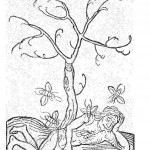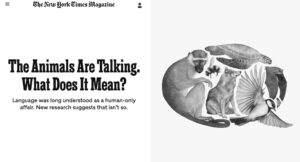“The Malaria Wars: Sonia Shah answers your malaria questions” is online today on NYTimes.com’s Freakonomics blog. Got some interesting questions about DDT, malaria in the United States, and malaria’s animal reservoirs. Enjoy!
Category: Disease and Ecology (Page 2 of 3)
My piece on the history of malaria–complete with illustrations and sidebars–appears in today’s Wall Street Journal. Check it out here.
An op-ed I wrote about a forbidden topic–the fact that many rural Africans do not want to sleep under the bednets we donate to them–appeared in this weekend’s Los Angeles Times. A prominent malariologist had this to say about it: “Excellent story – finally someone that dares to speak up. Mind you, your death sentence has been signed in Geneva by publishing this. You’ll be hated by the die-hard believers of nets…”
Perfect. That’s the kind of feedback that makes me feel like I’m doing my job. Check it out on this site, or at LA Times.
Also, in honor of last week’s World Malaria Day, see my article on greener methods of malaria control at Yale e360, and my blog post on the folly of square bednets for round huts at Ms. Magazine.
 My story on the problem of pharmaceutical residues in the environment–which has led to the mass poisoning of vultures in South Asia–is now up on Yale e360, and here on this website.
My story on the problem of pharmaceutical residues in the environment–which has led to the mass poisoning of vultures in South Asia–is now up on Yale e360, and here on this website.
I’ll never look at my medicine cabinet, or drugstore aisles, the same way. I had no idea that so many drugs we take pass through the body–and waste treatment plants–virtually intact. All those antibacterial soaps and sprays and pills and potions at your local CVS? Turns out that a vast majority of the drugs within, after use, will end up in waterways and sediments, where their residues will rub shoulders with soil and marine bacteria, exchanging genes. Whatever doesn’t kill them makes them stronger.
I know first-hand. My son just survived a bout of MRSA (methicillin-resistant staphlococcus aureus) rash. For him, it was a minor annoyance (albeit an alarming one.) For people with compromised immune systems or with background illnesses, drug-resistant bacteria are killers.
RIP Gyps vultures, too, poisoned to the brink of extinction by the anti-inflammatory drugs in the treated livestock they feed upon.
WHO reports this week that multi-drug resistant tuberculosis has reached unprecedented levels worldwide: one in four in some places! Meanwhile here in the US, we’re in a snit over a few modest reforms for health insurers. I have a new article coming out at e360 on how wanton overuse of antibiotics contributes to the spread of resistant bacteria. E.g. much of the antibiotics we feed to our livestock and douse our bodies with are excreted into the environment unchanged, deposited into waterways, spread on crops as fertilizer. When bacteria in the water and soil are exposed to this stuff, it selects for resistant strains….which can then trade genes with other, more pathogenic bacteria (they do that, those bacteria!) You’d be surprised to know the huge proportion of the drugs we consume actually end up in the environment, essentially unchanged. It’s not something most people think about.
Considering the scale of the health issues we face, our national snit over health insurance reform seems especially petty.
Check out the WHO report here.
I had a lovely conversation with Philip Adams of Australia’s national public radio program “Late Night Live” today, about malaria, the fall of Rome, and the bother of mosquito nets. You can check it out here.
The Malaria Consortium is putting on a 8-week exhibition of photographs featuring malaria at the UN headquarters in New York in advance of World Malaria Day on April 25. This weekend, the New York Times featured a selection of the photos, with a brief article on the history of the scourge. Check it out here.
The captions on the photos are the best part. Note that the mosquito-catching technique featured in slide 5 is pretty controversial. Using humans as live bait for malarial mosquitoes can certainly endanger them. I also found the quote on slide 9, which pictures two Nigerian children recovering from malaria (mostly naked, on a shorn mattress), quite telling. The father of the children describes their illness and treatment and then says, “It is not that we are not concerned, it is just normal.” A hint of the social reality of malaria in Africa, where people think of malaria the way we think of the flu–completely undermined by the story told by the dark, shadowy photograph alongside it.
Add King Tut to the list of famous personages felled by malaria. Tut died at age 19 in 1324 BC. According to a new study in JAMA, scientists have found genetic evidence of Plasmodium falciparum lurking in his mummy.
Tut’s a famous guy but he isn’t malaria’s earliest known victim–not by far.
Tut died some two thousand years ago. In 1994, scientists found antigens to plasmodium parasites in 5,000-year-old Egyptian and Nubian mummies. Check it out here. References to malaria have also been found in 4,000-year-old Sumerian and Egyptian texts. But we know malaria’s been a much older scourge than that, thanks to molecular clock techniques that analyze the parasite’s genome. We’ve probably had it since we descended from apes.
<a name=”fb_share” type=”button_count” share_url=”http://soniashah.org/2010/02/malaria-killed-king-tut-among-other-ancients/” href=”http://www.facebook.com/sharer.php”>Share</a><script src=”http://static.ak.fbcdn.net/connect.php/js/FB.Share” type=”text/javascript”></script>
My new piece on pesticides and wildlife die-offs is now up on Yale’s e360. Grist.org calls it a “must-read report“. Check it out here, and let me know what you think!















